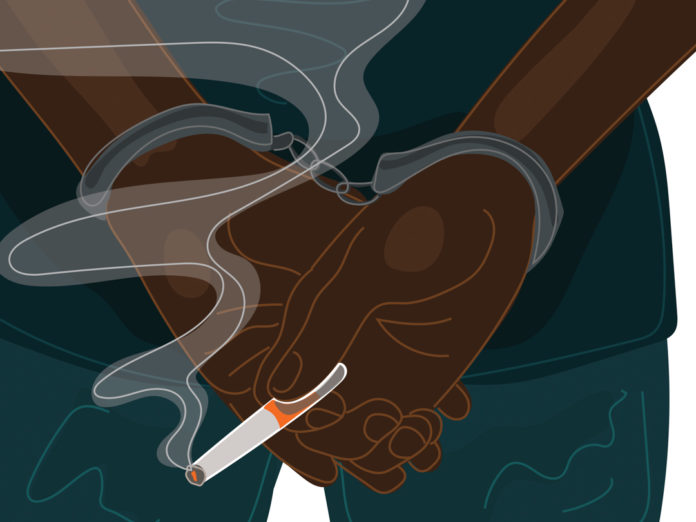This week’s feature article explores many of the challenges faced by professionals in the cannabis industry three years after legalization. The feature doesn’t mention how Black and Indigenous people in Canada have not been able to reap the rewards of this multi-billion dollar industry and are still being disproportionately arrested for cannabis-related charges throughout Canada.
There have been a handful of studies within the past decade that reveal that Canada’s racist, colonial roots are still alive and well today. Despite Indigenous people making up just 2.5 per cent of the population in Vancouver, they account for 17 per cent of people arrested for cannabis possession in 2015. Between 2015 to 2017, Indigenous people living in Regina were almost nine times more likely to get arrested for cannabis possession than white people. A 2017 study in Toronto found that Black people are three times more likely to get arrested for minor possession charges than white people.
You might be thinking that this racial divide existed before legalization, and now that we can all smoke weed freely, these racialized arrests are no longer as prevalent. A 2020 study revealed that Black and Indigenous people are disproportionately arrested for cannabis possession in the five major Canadian cities studied — Vancouver, Calgary, Regina, Halifax, and Ottawa. In fact, there are now more laws than ever before that can criminalize cannabis users.
Keep in mind that in order to become a licensed cannabis cultivator, producer, or retailer, one of the hoops you must jump through is obtaining a cannabis security clearance. Those with criminal records are unlikely to get approved for this clearance. This means that many more Black and Indigenous Canadians are unable to enter this extremely lucrative industry than white Canadians who were less likely to be arrested before and after prohibition.
There are an estimated 500,000 Canadians charged with cannabis possession, yet as of 2020, only 341 people have successfully erased their records. This is because the six layers of documentation needed to clear these charges is prohibitive to those with low income and who live far away from their city of arrest for these charges. The government puts enough hoops in place to make it nearly impossible for those charged with cannabis possession to ever own a cannabis business.
Black and Indigenous people are vastly underrepresented in leadership roles within the Canadian cannabis industry. A 2020 study showed that three out of every four people in leadership roles of licensed processors and their parent companies were white men. Non-white women made up a dismal 2 per cent of those studied.
The 2018 Cannabis Act was made with three goals in mind: “keep cannabis out of the hands of youth, keep profits out of the pockets of criminals, and protect public health and safety by allowing adults access to legal cannabis.” There is nothing within the Act that addresses racial reconciliation for communities who have been disproportionately affected by the “War on Drugs” and drug prohibition.
Canada should invest some of the hundreds of millions of dollars in tax revenue they have received from cannabis legalization into the BIPOC community that disproportionately suffered under the thumb of prohibition. Trudeau promised in 2015 that this revenue would be used to address public health and addictions issues. Indigenous people bear a heavier burden of social and health inequalities connected to drug-related policies, and this is partly due to the systemic racism of the RCMP. Yet it seems there are no funds being allocated into this community from cannabis taxation, and public health and addiction issues are worse than they have ever been, with overdose fatalities being at an all-time high. Although Indigenous people make up just 3.3 per cent of B.C.’s population, they accounted for 15 per cent of all toxic drug deaths in 2020. So tell me, where is this money going?
While our legendary B.C. bud is thriving in the legal marketplace and the cannabis industry is growing stronger every day, these benefits have yet to be felt by Black and Indigenous people. We still have a long way to go when it comes to making the cannabis industry a diverse and inclusive space for all.
Image: Brielle Quon/The Cascade
Andrea Sadowski is working towards her BA in Global Development Studies, with a minor in anthropology and Mennonite studies. When she's not sitting in front of her computer, Andrea enjoys climbing mountains, sleeping outside, cooking delicious plant-based food, talking to animals, and dismantling the patriarchy.


